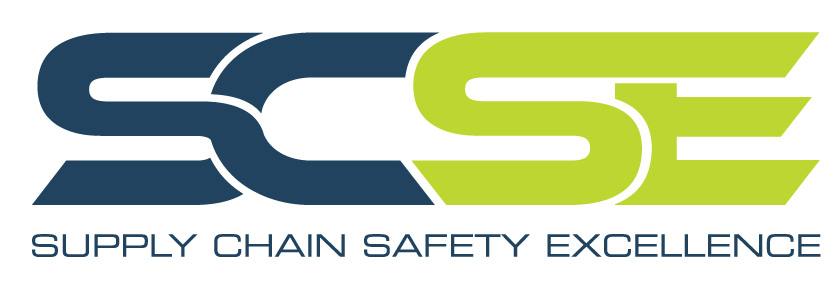Earlier this year the NHVR published an article in their fortnightly industry update titled ‘Extra CoR pressure not required under law’ (read here). The crux of this article was that off-road party’s such as Consignors and Prime Contractors do not need to delve too deeply into the business practices of transport operators because…
“The law makes it clear that it’s the transport operator’s responsibility to manage their own operations and activities so as to ensure safety under the primary and safety duty provisions.”
It has been stated “Selecting and contracting with other CoR parties may be the point where you have the greatest capacity to influence and control the transport activities”(1). As an off-road party one way to help ensure the safety of transport activities is to engage a reputable, safe and compliant transport operator. This then begs the question:
How does an off-road party know they are working with a reputable, safe and compliant transport operator?
(so as to ensure safety under the off-road parties’ primary safety duty obligations).
One could argue that the regulatory framework in Australia does not currently exist to help answer this question. Now what is meant by that?
In Australia there is currently no transport operator licencing system and participation in heavy vehicle accreditation schemes is voluntary, not mandatory. In effect, in Australia there is an open transport market with low barriers to entry and no minimum standards required to operate a trucking business.
In contrast, countries such as the UK, Canada, America and New Zealand have transport operator licencing schemes which require truck operators to meet minimum standards to operate a trucking business (2,3,4,5). These schemes have safety rating systems, or equivalent, whereby the operator is given a score based on performance data including roadworthiness inspections and roadside inspections, traffic offences and infringements. A person cannot simply get a heavy vehicle drivers’ licence, buy a truck and hit the open road in these countries, like they currently can in Australia.
The next best thing to transport operator licencing available in Australia today are optional heavy vehicle accreditation schemes. But as already stated participation in these schemes is voluntary, not mandatory. It could be seen that involvement in a voluntary scheme is evidence of a trucking business trying to do the right thing. In fact, evidence from a number of sources points to improved safety, efficiency and productivity for operators who participate in accreditation schemes (6).
So, then how does an off-road party get the confidence and certainty that they are engaging a reputable, safe and compliant transport operator or trucking business?
Here are 3 things to check when engaging transport operators:
1. Has the operator “opted in” to a heavy vehicle accreditation scheme? For example, the National Heavy Vehicle Accreditation Scheme (NHVAS), one or all modules, or industry accreditation schemes such as TruckSafe or CraneSafe. Further to the reasons outlined above, evidence has shown “improvements in operator safety performance… are evident in terms of: lower crash rates, lower insurance claim rates, lower incidence of non-conformities and lower rates of major defects.” (7)
2. Does the operator have an accredited Safety Management System (SMS) to ISO 45001, OHSAS 18001 or ASNZS 4801, or a national or state based WHS Self-Insurers licence? While these are not specific to heavy vehicle safety, they do demonstrate the use of a systematic approach to managing safety. In fact, in the rail and aviation sectors, it is a regulatory requirement for rail and airline operators to have an accredited SMS (8,9).
3. If neither of the above, verify that the operator has systems and processes in place to ensure the safety of transport activities and manage CoR risks, by conducting a CoR assurance assessment. This assessment can be undertaken as an audit, or as a self-assessment or questionnaire that the operator completes. (And hopefully one day a “one audit” regime will be in place for the industry that is recognised and accepted by all parties).
It is important to note that such assessments are not intended for the off-road party to delve too deeply into operator records and check compliance, rather that the operator has systems and process to do this. For example, off-road parties should not check drivers work diaries for compliance to work and rest times as part of this assessment. But they should confirm the operator has a process to monitor drivers work and rest times and check work diaries for compliance.
From a transport operators’ perspective, how do they know they are working for a reputable, safe and compliant Consignor or Prime Contractor?
As an off-road party here are 3 things for you to self-check:
1. Have you had your business practices (CoR policies and procedures, systems and processes) audited by an external party? This is a requirement of the above mentioned heavy vehicle accreditation schemes for operators. For example, you could use the Australian Logistics Council Master Code Auditing Service (AMCAS) or equivalent professional services.
2. Do you have an accredited SMS (or WHS Self-Insurers licence), as above? Or have you adopted a safety management systems approach to managing the safety and compliance of your transport activities? And is it audited externally or internally?
3. Have you undertaken a gap assessment of your business practices against the Master Industry Code of Practice or using the National Heavy Vehicle Regulator (NHVR) CoR Gap Assessment Tool (to identify potential gaps and implement improvement opportunities)? And or have you undertaken a risk assessment of your transport activities to identify public risks, and eliminate or minimise those risks?
Undertaking these 3 checks is your opportunity to choose who to work with, and on what terms. The safety of transport activities is a shared responsibility and CoR parties need to work together to get the best (safest and compliant) outcomes (10).
Sean Minto is the Technical Writer of the Master Code, if you require assistance with any of the areas identified above, please get in touch.
- Master Industry Code of Practice, Master Code – V1.0, 23 November 2018, accessed at www.nhvr.gov.au
- UK Government, Department of Transport, Goods vehicle operator licencing guide, GV74, 4 April 2013, accessed at www.gov.uk/topic/transport
- Ontario Ministry for Transportation, Commercial vehicle operator’s registration (CVOR), accessed at www.mto.gov.on.ca
- Federal Motor Carriers Safety Administration (CMFSA), Compliance, Safety, Accountability (CSA) program, accessed at csa.fmcsa.dot.gov
- NZ Transport Agency, Transport service licences (TSL), accessed at www.nzta.govt.nz
- Analysis of Heavy Vehicle Safety Accreditation Schemes in Australia, Fellows Medlock and Associates, February 2018, accessed on the NHVR website at www.nhvr.gov.au
- Fellows Medlock and Associates
- Rail Safety National Law (South Australia) Act 2012, accessed on the South Australian Legislation website at www.legislation.sa.gov.au
- Australian Government, Civil Aviation Safety Authority (CASA), Safety Management, accessed at www.casa.gov.au
- Heavy Vehicle National Law (Queensland) 2018, s26A, accessed on the QLD Government Queensland Legislation website at www.legislation.qld.gov.au
For more information:
- ALC & ATA, Master Industry Code of Practice, Master Code – V1.0, 23 November 2018, accessed on the NHVR website at www.nhvr.gov.au
- Cecil. N., (2019), ATN, Opinion: Clarity of COR Compliance, 14/05/2019.
- Cecil. N., (2019), LinkedIn, Chain of Responsibility and contractor management – too hard or just good risk management?, Published on 22 August 2019.
- National Heavy Vehicle Regulator (NHVR), ‘Third Party Interactions – Quick Guide’, accessed on the NHVR website at www.nhvr.gov.au
- NHVR, ‘Third Party Engagement Checklist – Template’, accessed on the NHVR website at www.nhvr.gov.au


